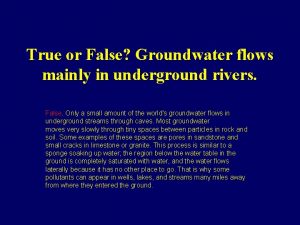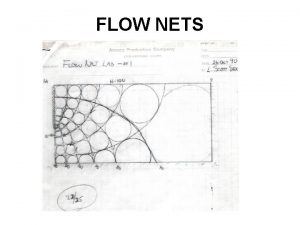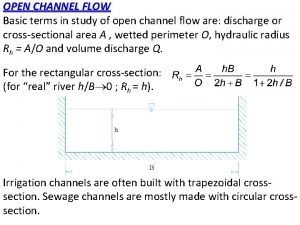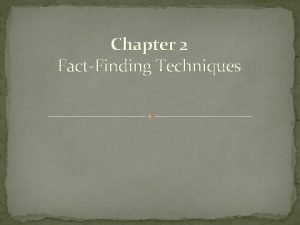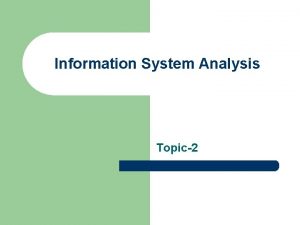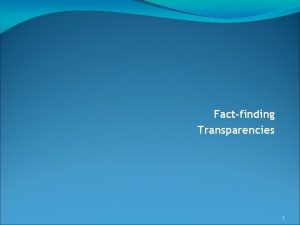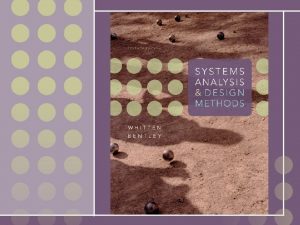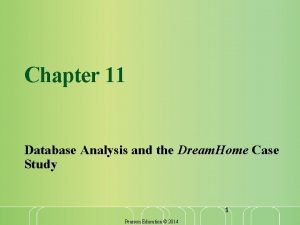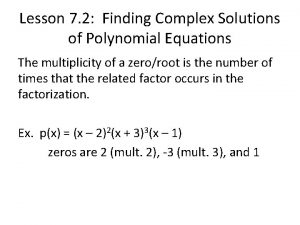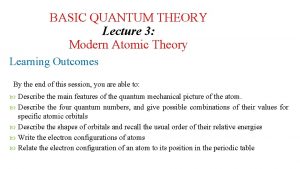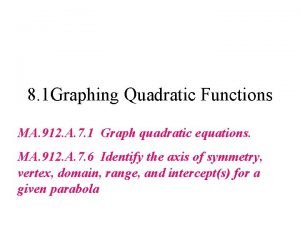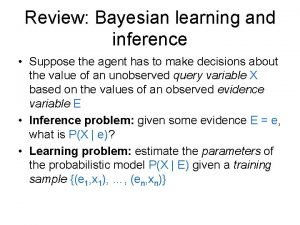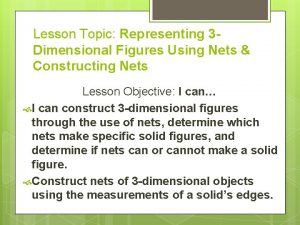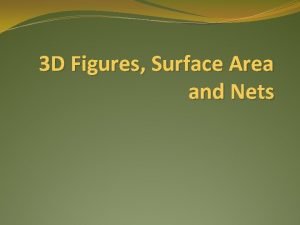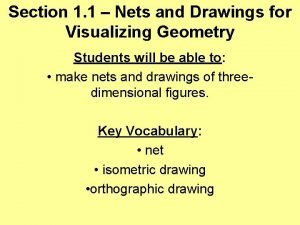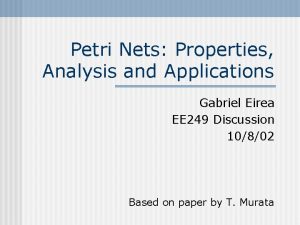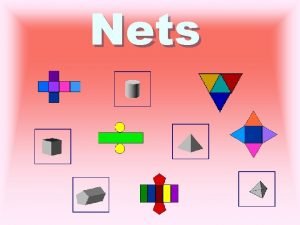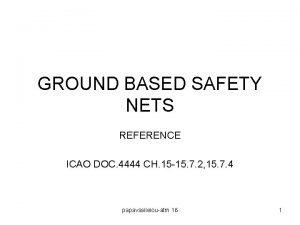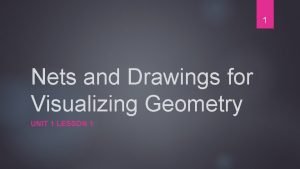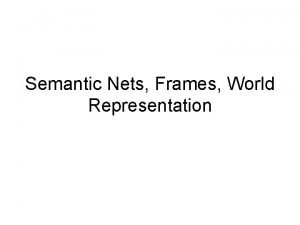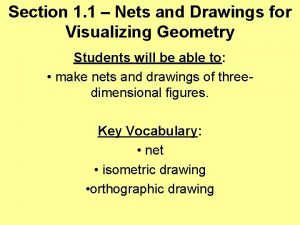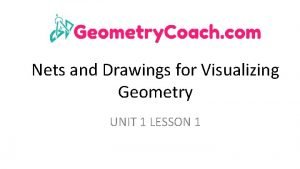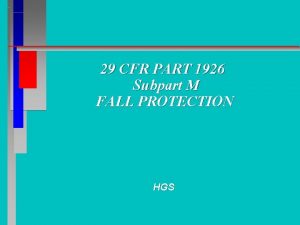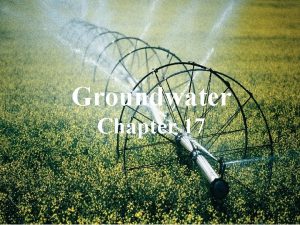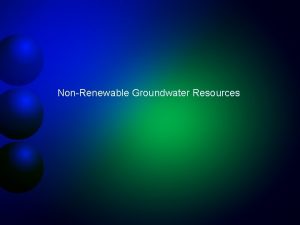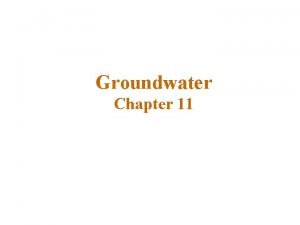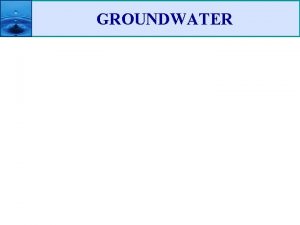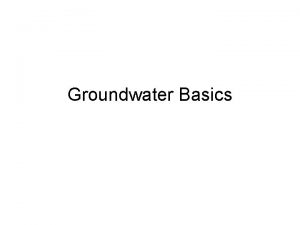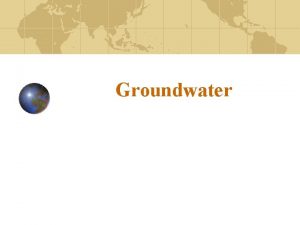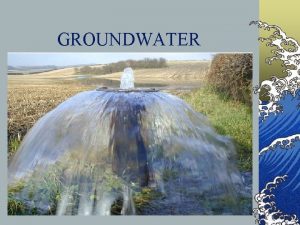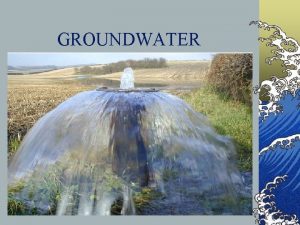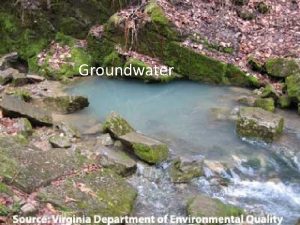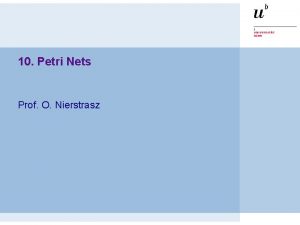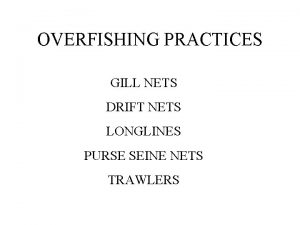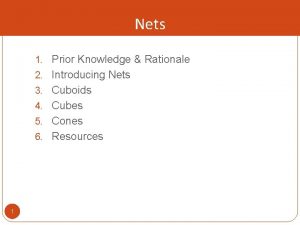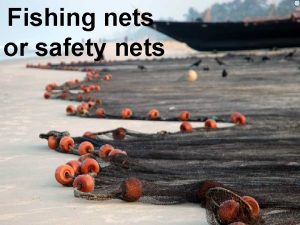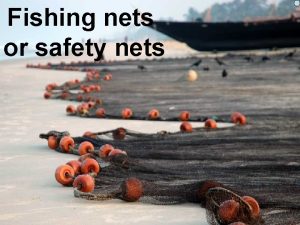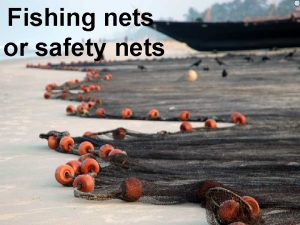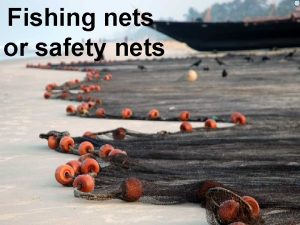FLOW NETS Techniques for Finding Solutions to Groundwater






























- Slides: 30

FLOW NETS

Techniques for Finding “Solutions” to Groundwater Flow”

Techniques for Finding “Solutions” to Groundwater Flow” • Inspection (intuition) • Graphical Techniques

Techniques for Finding “Solutions” to Groundwater Flow” • Inspection (intuition) • Graphical Techniques • Analog Models

Techniques for Finding “Solutions” to Groundwater Flow” • • Inspection (intuition) Graphical Techniques Analog Models Analytical Mathematical Techniques (Calculus)

Techniques for Finding “Solutions” to Groundwater Flow” • • • Inspection (intuition) Graphical Techniques Analog Models Analytical Mathematical Techniques (Calculus) Numerical Mathematical Techniques (Computers)

I. Introduction A. Overview

I. Introduction A. Overview • one of the most powerful tools for the analysis of groundwater flow.

I. Introduction A. Overview • one of the most powerful tools for the analysis of groundwater flow. • provides a solution to La. Places Equation for 2 -D, steady state, boundary value problem.

I. Introduction A. Overview • one of the most powerful tools for the analysis of groundwater flow. • provides a solution to La. Places Equation for 2 -D, steady state, boundary value problem. • To solve, need to know:

I. Introduction A. Overview • one of the most powerful tools for the analysis of groundwater flow. • provides a solution to La. Places Equation for 2 -D, steady state, boundary value problem. • To solve, need to know: – have knowledge of the region of flow

I. Introduction A. Overview • one of the most powerful tools for the analysis of groundwater flow. • provides a solution to La. Places Equation for 2 -D, steady state, boundary value problem. • To solve, need to know: – – have knowledge of the region of flow boundary conditions along the perimeter of the region

• To solve, need to know: – – – have knowledge of the region of flow boundary conditions along the perimeter of the region spatial distribution of hydraulic head in region.

• Composed of 2 sets of lines – – equipotential lines (connect points of equal hydraulic head) flow lines (pathways of water as it moves through the aquifer.

• Composed of 2 sets of lines – – d 2 h dx 2 equipotential lines (connect points of equal hydraulic head) flow lines (pathways of water as it moves through the aquifer. + d 2 h = dy 2 0 gives the rate of change of h in 2 dimensions

II. Assumptions Needed For Flow Net Construction

II. • • Assumptions Needed For Flow Net Construction Aquifer is homogeneous, isotropic Aquifer is saturated

II. • • • Assumptions Needed For Flow Net Construction Aquifer is homogeneous, isotropic Aquifer is saturated There is no change in head with time

II. • • Assumptions Needed For Flow Net Construction Aquifer is homogeneous, isotropic Aquifer is saturated There is no change in head with time Soil and water are incompressible

II. • • • Assumptions Needed For Flow Net Construction Aquifer is homogeneous, isotropic Aquifer is saturated there is no change in head with time soil and water are incompressible Flow is laminar, and Darcys Law is valid

II. • • • Assumptions Needed For Flow Net Construction Aquifer is homogeneous, isotropic Aquifer is saturated there is no change in head with time soil and water are incompressible flow is laminar, and Darcys Law is valid All boundary conditions are known.

III. Boundaries

III. Boundaries A. Types

III. Boundaries A. Types 1. Impermeable 2. Constant Head 3. Water Table

III. Boundaries A. Types 1. Impermeable 2. Constant Head 3. Water Table

III. Boundaries B. Calculating Discharge Using Flow Nets Q’ = Kph f Where: Q’ = Discharge per unit depth of flow net (L 3/t/L) K = Hydraulic Conductivity (L/t) p = number of flow tubes h = head loss (L) f = number of equipotential drops

IV. Refraction of Flow Lines

IV. Refraction of Flow Lines A. The derivation B. The general relationships C. An example problem

IV. Flow Nets: Isotropic, Heterogeneous Types A. “Reminder” of the conditions needed to draw a flow net for homogeneous, isotropic conditions B. An Example of Iso, Hetero

 True or false: groundwater can flow.
True or false: groundwater can flow. Groundwater flow net
Groundwater flow net Groundwater flow definition
Groundwater flow definition Fonctions techniques
Fonctions techniques Which of the following is not a fact finding technique
Which of the following is not a fact finding technique Fact gathering
Fact gathering Fact-finding technique
Fact-finding technique Data dictionary in dfd
Data dictionary in dfd Fact finding techniques in database
Fact finding techniques in database Requirements discovery techniques
Requirements discovery techniques Dreamhome case study solution
Dreamhome case study solution 7.2 finding complex solutions of polynomial equations
7.2 finding complex solutions of polynomial equations What is y
What is y N + l rule
N + l rule Finding solutions
Finding solutions Bayes nets
Bayes nets Represent solid figures using nets
Represent solid figures using nets Partitioned semantic nets in artificial intelligence
Partitioned semantic nets in artificial intelligence Surface area using nets
Surface area using nets Nets and drawing for visualizing geometry
Nets and drawing for visualizing geometry Petri nets properties analysis and applications
Petri nets properties analysis and applications Net triangular prism
Net triangular prism Nets church planting
Nets church planting List the 4 nets for better internet searching
List the 4 nets for better internet searching 7 safety nets
7 safety nets 1-1 nets and drawings for visualizing geometry answers
1-1 nets and drawings for visualizing geometry answers Semantic nets and frames
Semantic nets and frames Nets and drawings for visualizing geometry
Nets and drawings for visualizing geometry Cylinder net
Cylinder net Nets blox
Nets blox Safety nets must be drop tested
Safety nets must be drop tested
